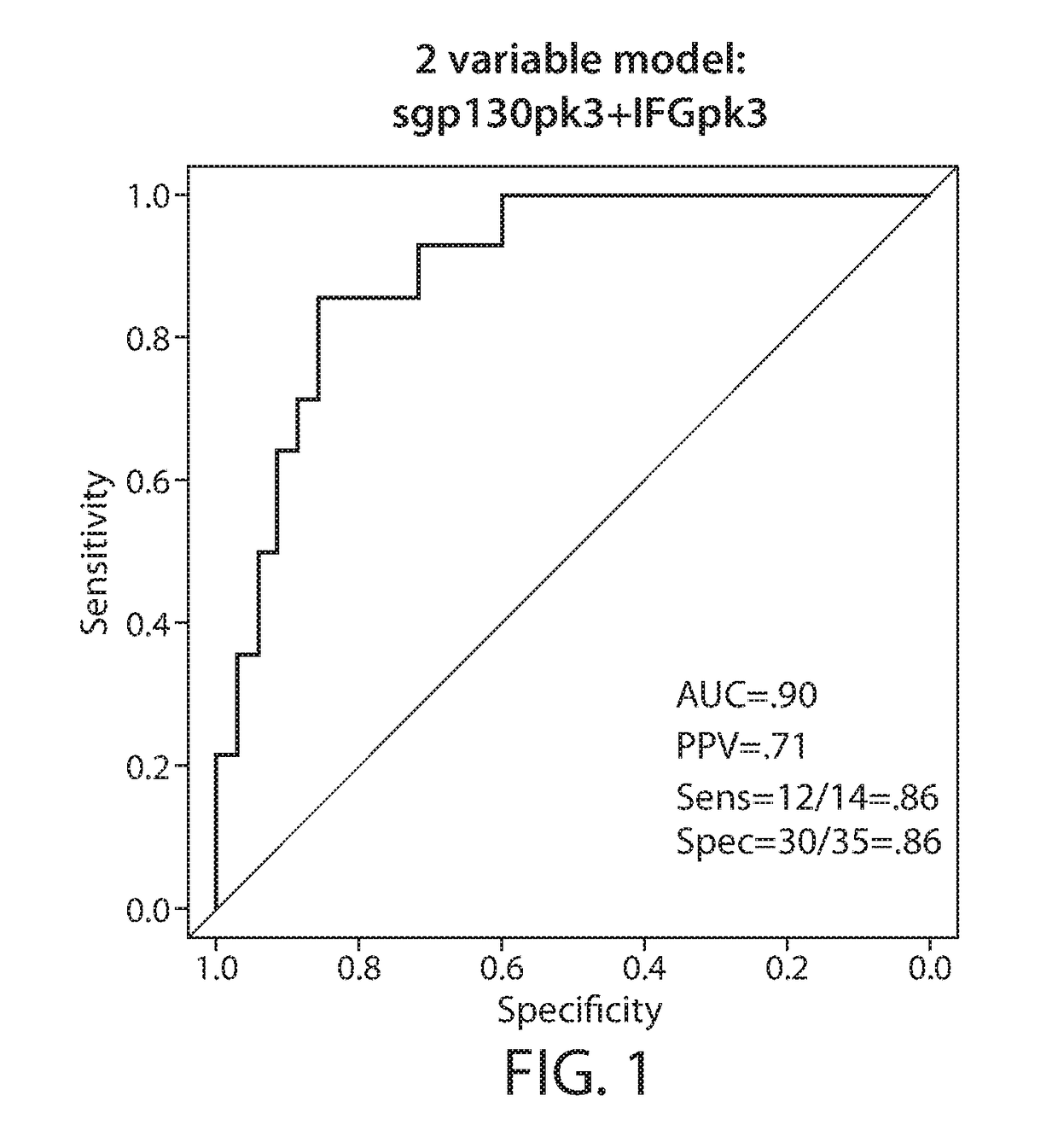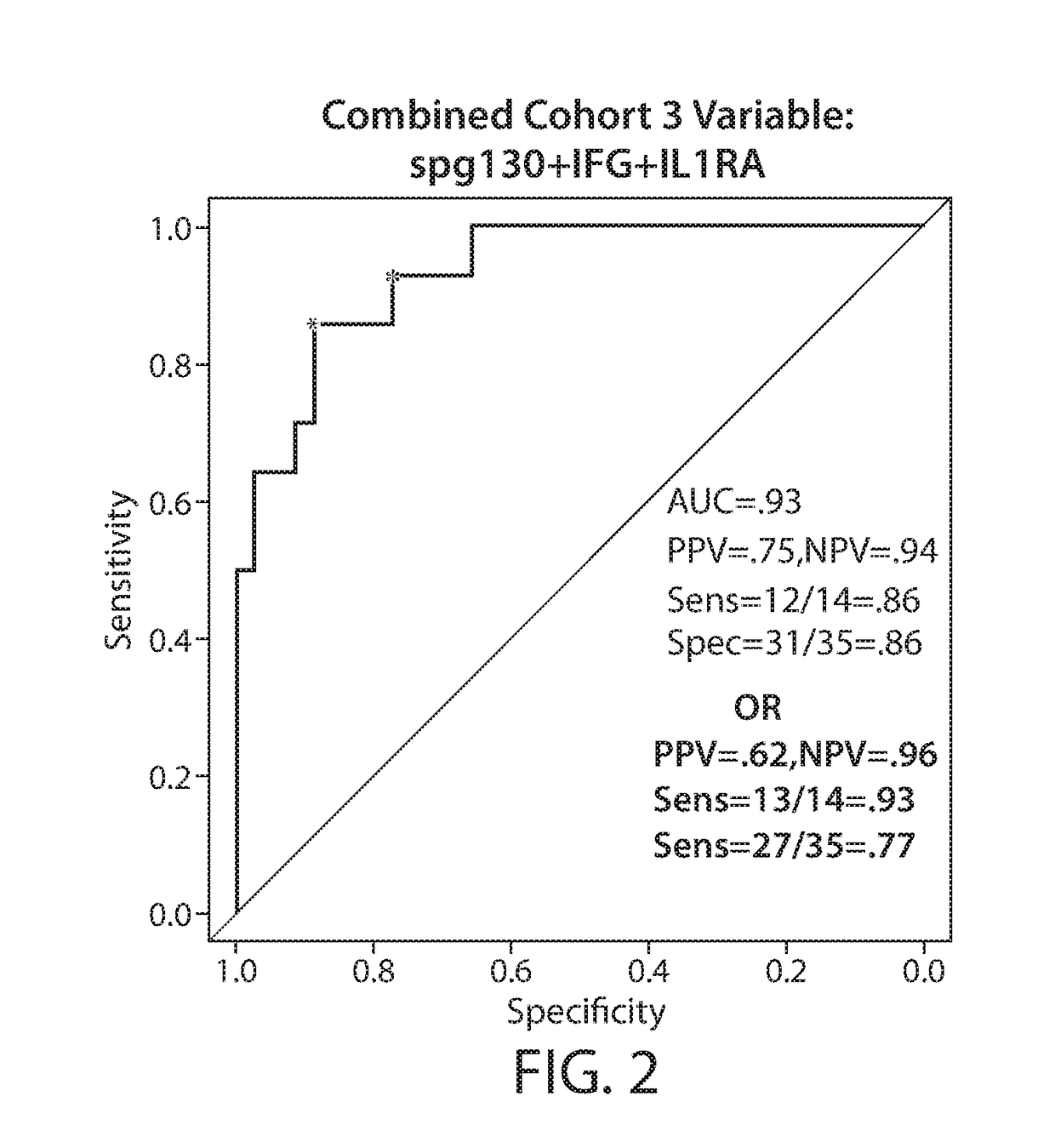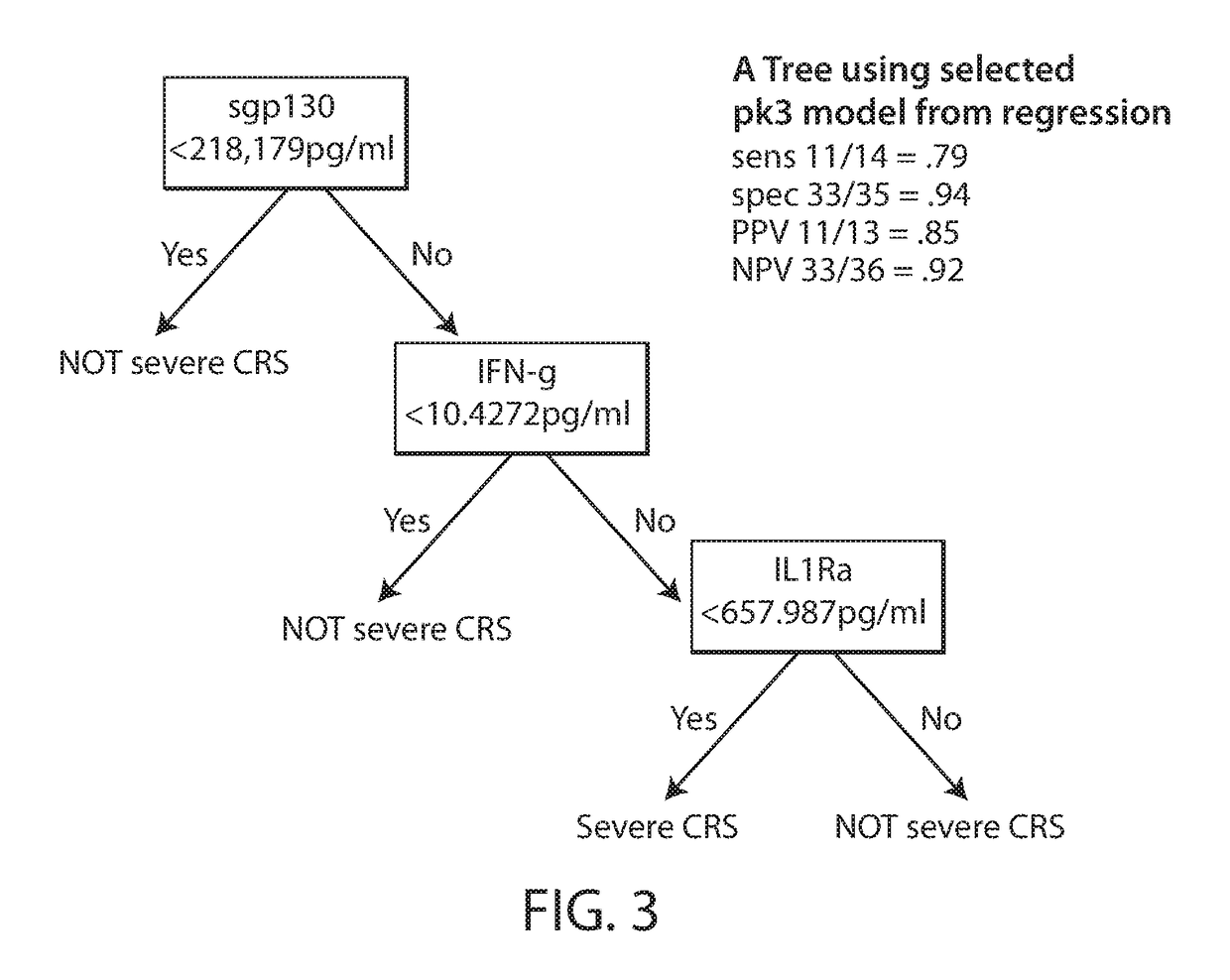Biomarkers predictive of cytokine release syndrome
a cytokine release and biomarker technology, applied in the direction of immunodeficiency syndrome, drug composition, peptides, etc., can solve the problems of serious and common adverse side effects of crs, and severe crs is a potentially life-threatening toxicity, and achieves greater level or activity of il2. , the effect of reducing the risk of cytokine releas
- Summary
- Abstract
- Description
- Claims
- Application Information
AI Technical Summary
Benefits of technology
Problems solved by technology
Method used
Image
Examples
example 1
s Accurately Predict Cytokine Release Syndrome (CRS) after Chimeric Antigen Receptor (CAR) T Cell Therapy for Acute Lymphoblastic Leukemia (ALL)
[0809]CAR T cells with anti-CD19 specificity have demonstrated considerable promise against highly refractory hematologic malignancies. Dramatic responses with complete remission rates as high as 90% have been reported in patients (pts) with relapsed / refractory ALL treated with CTL019 (Maude et al., NEJM 2014). Marked in vivo CAR T cell proliferation (100 to 100,000×) leads to improved efficacy but can be associated with adverse events, including cytokine release syndrome (CRS). To better understand manifestations of CRS, clinical, laboratory, and biomarker data of 39 children and 12 adults with relapsed / refractory ALL treated with anti-CD19 CAR T cells were studied.
[0810]T cells were lentivirally transduced with a CAR composed of anti-CD19 single chain variable fragment / 4-1BB / CD3 (Porter, NEJM 2011). 43 cytokines, chemokines, and soluble re...
example 2
ation of Predictive Biomarkers for Cytokine Release Syndrome after Chimeric Antigen Receptor T Cell Therapy for Acute Lymphoblastic Leukemia
Introduction
[0818]Chimeric antigen receptor (CAR)-modified T cells with anti-CD19 specificity are a highly effective immune therapy for relapsed / refractory acute lymphoblastic leukemia (ALL). Cytokine release syndrome (CRS) is the most significant and life-threatening toxicity. To improve understanding of CRS, cytokines and clinical were measured in 51 CTL019-treated patients. Peak levels of 24 cytokines, including IFNγ, IL6, sgp130, and sIL6R in the first month after infusion were highly associated with severe CRS. Using regression modeling, it could be accurately predicted which patients would develop severe CRS with a signature composed of three cytokines. Results were validated in an independent cohort. Changes in serum biochemical markers, including C-reactive protein and ferritin, were associated with CRS but failed to predict development ...
example 3
tal Methods and Results
[0869]Trial Design
[0870]Laboratory and clinical data was collected from patients treated on 3 clinical trials designed to assess the safety and feasibility of CTL019 T cell therapy in relapsed / refractory CD19+ malignancies. Clinicaltrials.gov: NCT01626495, NCT 02030847 and NCT01029366. Written informed consent was obtained from all subjects or their legal guardian according to the Eligibility criteria for the three trials are included on the Clinicaltrials.gov website and are also previously published. Of note, patients with active graft versus host disease, active CNS involvement with leukemia (CNS3), an uncontrolled infection, active hepatitis B or C, or HIV were excluded. Patients who had a prior allogeneic stem cell transplant were eligible provided it had been at least 6 months since the transplant and the patient did not require immunosuppression at the time of enrollment. Study procedures including details of leukapheresis and types of lymphodepleting c...
PUM
| Property | Measurement | Unit |
|---|---|---|
| time course | aaaaa | aaaaa |
| blood pressure | aaaaa | aaaaa |
Abstract
Description
Claims
Application Information
 Login to View More
Login to View More - R&D
- Intellectual Property
- Life Sciences
- Materials
- Tech Scout
- Unparalleled Data Quality
- Higher Quality Content
- 60% Fewer Hallucinations
Browse by: Latest US Patents, China's latest patents, Technical Efficacy Thesaurus, Application Domain, Technology Topic, Popular Technical Reports.
© 2025 PatSnap. All rights reserved.Legal|Privacy policy|Modern Slavery Act Transparency Statement|Sitemap|About US| Contact US: help@patsnap.com



